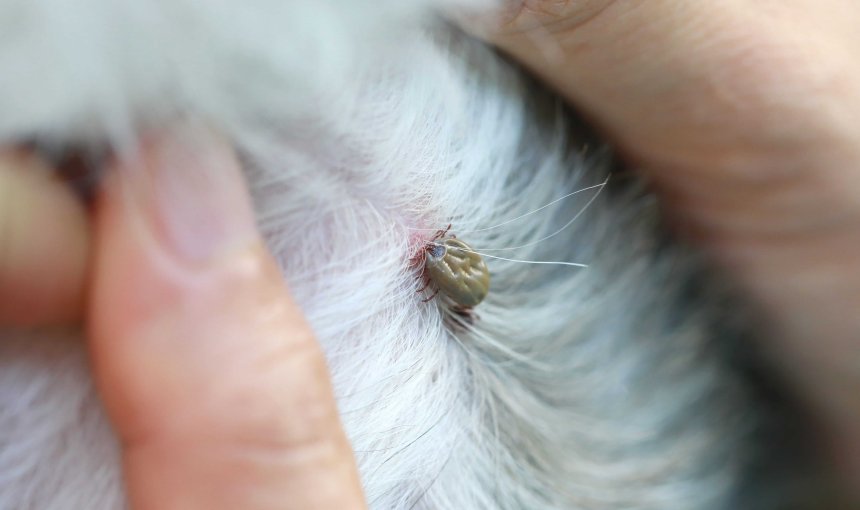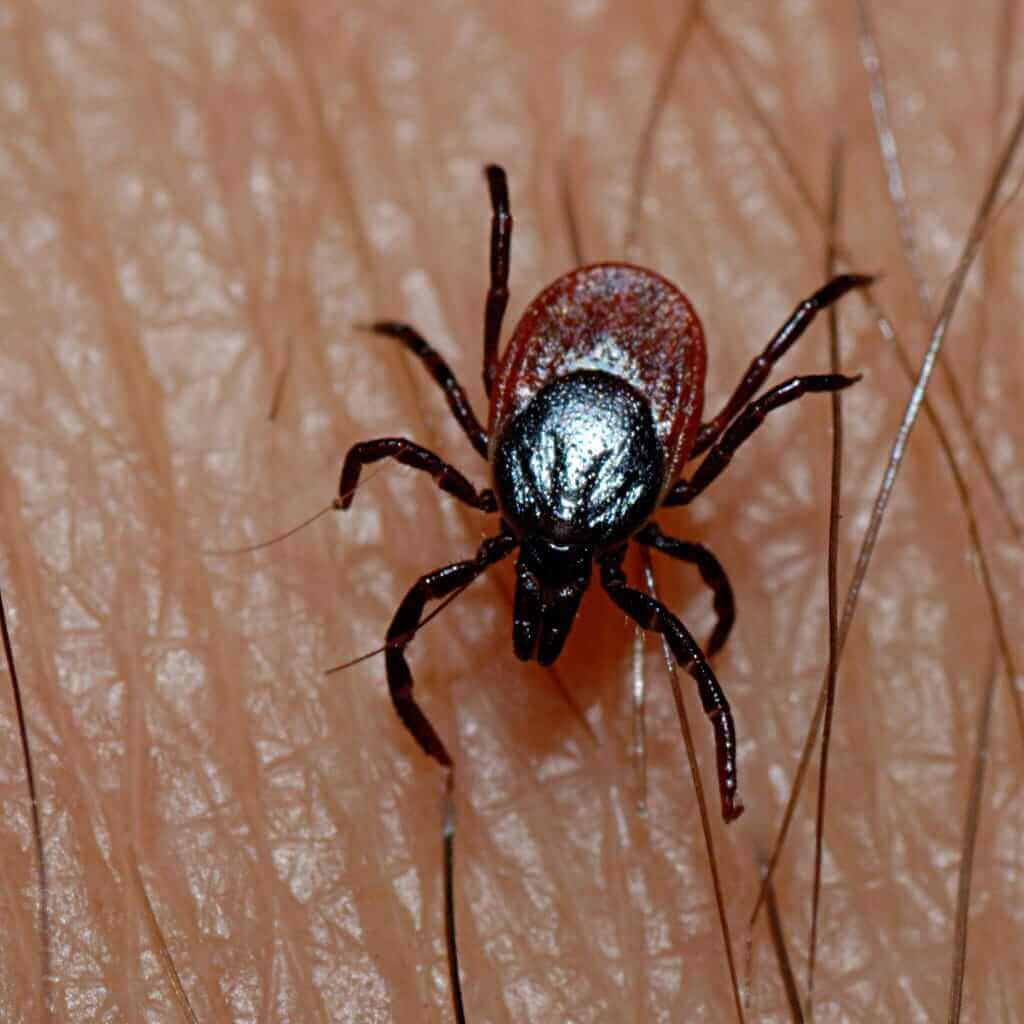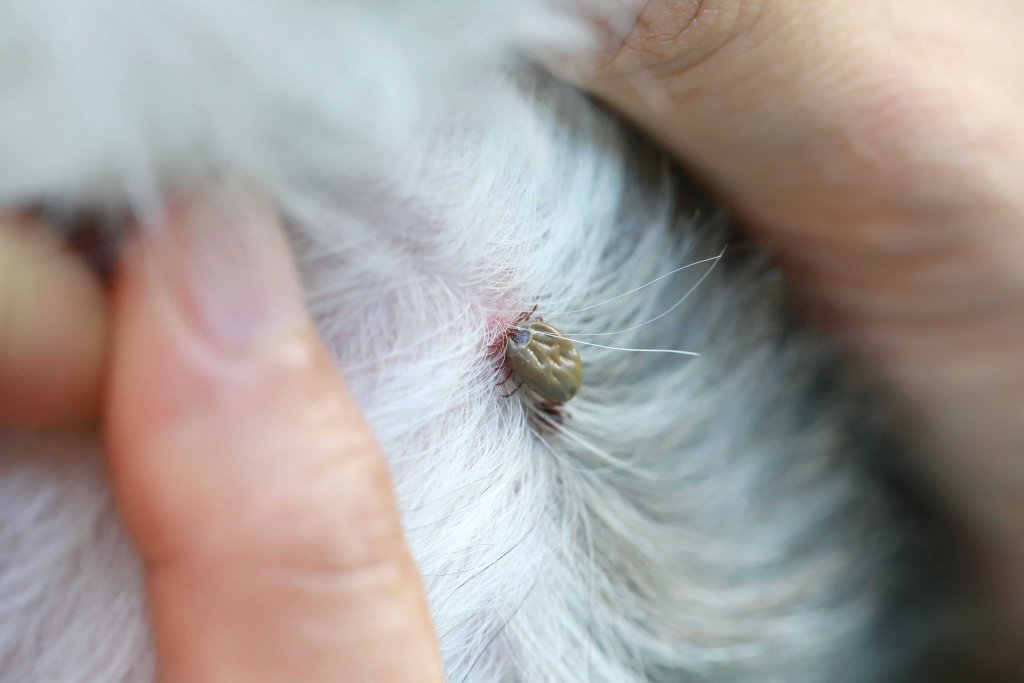Tick Control for Dogs: How to Prevent and Remove Tick Bites on Dogs
Ticks on dogs are no fun! But with these prevention and control measures, you can ensure you and your dog(s) stay healthy and tick free, all summer long!

Spending more time outside with your favorite furry friend now that it’s warmer? Sweet. But while you enjoy your adventures together, it’s important to watch out for warm weather dangers for dogs, including ticks on dogs. Ticks can bite your dog without being spotted and, if left untreated, be nasty for your four-legged friend. Good thing the Tractive blog is here to tell you all about tick control for dogs, from prevention to treatment to when to see a vet.
What are ticks?

Ticks – or Ixodidae if you want to sound sciency – are little creatures which come out in the summer and pester us and our pets. Part of the arachnid family, they are related to spiders and mites. Ticks are parasites; they attach to the skin of mammals like humans and dogs by biting them, and then feed on their blood. In doing so they can transmit diseases, such as Rocky Mountain spotted fever, Lyme disease, and more.
Ticks tend to hang out around tall grass and forests. They cannot jump or fly. Instead, they cling to you as you pass by. Once they’ve found a host, ticks bury their teeth inside the skin and the feed for days. Ick, we know! It typically takes 24 – 48 hours for a tick to transmit a disease to its host1. That’s why it’s a good idea to remove a tick – safely, of course – as soon as you find one.
Tick bite on dogs
So how do you check for a tick bite on dogs? After a day out in high tick risk areas – which unfortunately tend to be great places for walks – be sure to carefully check your dog for ticks. They look and feel like a small bump on your dog’s skin. Search with both your eyes and your hands. Check between the toes, inside the ears, between the legs, and around the neck. If you notice a small, unusual bump, pull the fur back to look closer.
But what exactly does a tick look like on a dog? O more specifically, a tick bite on dogs? We’ve put an image below for reference. A warning; it might be a bit triggering.

How to remove a tick from a dog
As a dog parent, it’s a good idea to learn how to get a tick off a dog. It’s important to remove the tick as soon as possible, and make sure to remove the tick’s entire body. The longer the tick stays attached to the dog, and the more of it is attached, the higher the chances of your dog getting infected by something the tick is carrying, such as Lyme disease. As soon as you find a tick, use tweezers to remove it as close to the body of your dog as possible. Then, continue checking for additional tick bites on your dog. Be as thorough as you can be and try to remove them all.
When to see a vet after a tick bite on dog
If your dog has had a tick bite, it’s a good idea to monitor them carefully afterwards to make sure they’re not showing any signs of illness. If they appear sick or unwell, take them to the vet as soon as possible. For example, your dog might have got Lyme disease, which can have the following symptoms:
- Fever
- Reduced appetite
- Decreased energy
- Difficulty walking
- Pain, discomfort or stiffness
- Swollen joints2
💉 Also, talk with your vet about vaccinating your pet against Lyme disease, and about the best way to prevent fleas and ticks from latching on to your your beloved pet.
Tick prevention for dogs
Fed up with ticks on dogs, and want to know how to get rid of ticks on dogs for good? Keeping dogs out of grasses and woods would, of course, help reduce their exposure to ticks. But it’s not very realistic to keep dogs inside all through tick season. Dogs love hiking, they love the woods and, not surpisingly, might pick up a tick or two on the way. Luckily, tick bites on dogs can be prevented through regular use of tick control for dog products, like the following:
Tick sprays
Tick spray kills ticks quickly and provides some short-term protection. You can use a spray if you’re planning on spending time out in wooded areas with your dog. Be careful when using it around your dog’s face, and do not use it on or around any other animals in the home. Tick sprays often contain Permethrin (meant for dogs only) or Pyrethrin. You don’t have to soak your dog with the stuff, but be sure to spray all over so everything’s covered. Follow your vet’s advice and the manufacturer’s directions on how often to spray.
Tick shampoos
Bathing your dog with a shampoo that contains medicated ingredients will generally kill ticks on contact. This can be a low-cost way of protecting your dog during peak tick season. You will need to repeat the process about every two weeks, as its effects tend to wear off. To properly use a flea & tick shampoo, be sure to work the shampoo in over your dog’s entire body. Then, leave it on for at least 10 minutes before you rinse it off. Again, remember to protect your dog’s face – especially the eyes and ears.
Powders
Powders are generally easy to apply, but can create a mess. If your dog has asthma, powders may not be the best choice, since your dog might inhale some of it.
Tick collars
Collars that repel ticks are easy to use, though they are mainly useful for protecting the neck and head from ticks. The tick collar needs to make contact with your dog’s skin in order to transfer the chemicals onto the dog’s fur and skin. Ask your vet before putting a tick collar on your dog. If you go for this option, make sure there’s just enough room to fit two fingers under your dog’s collar. Cut off any excess length of collar to prevent your dog from chewing on it. Check the package for information to see how long it offers protection, and know that many tick collars become less effective when they get wet. Watch carefully for any irritation under the collar. In case you see signs of irritation, you may need to use a different product.
Keep your dog out of harm’s way with Tractive GPS
One way to help prevent tick bites on dogs is follow your dog’s adventures with a GPS dog tracker. If you let your dog roam freely on your property, or if you’re worried about them escaping, you can always know where they are with Tractive GPS.
You can also get proactive with a Virtual Fence. This feature normally alerts you in case your dog wanders too far from home, but can also let you know if they step out of a tick-free space and into a danger zone. That way, you know in case you need to search for and remove any ticks when they’re back.
Conclusion: tick control for dogs
It’s the perfect time for walking in the woods and other outdoor activities. However, warm weather also means more ticks, which can lead to the transmission of tick-borne diseases via tick bites on dogs. That’s why we recommend you to:
- Always search your dog for ticks after you’ve been in a grassy or forested area in the warm months.
- Use tweezers to remove a tick on your dog – make sure to get the whole thing out, and do it as soon as possible.
- Monitor your dog and take them to the vet in case they get sick from a tick bite.
- Use one of the tick control methods mentioned above for long-term tick prevention for dogs.
- See if your dog has ventured into tick territory with a GPS dog tracker.
For even more tips on tick control for dogs, check out the video below:




